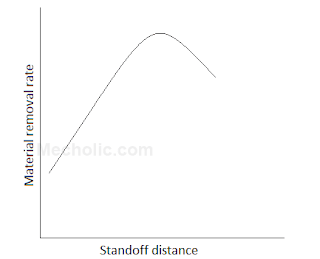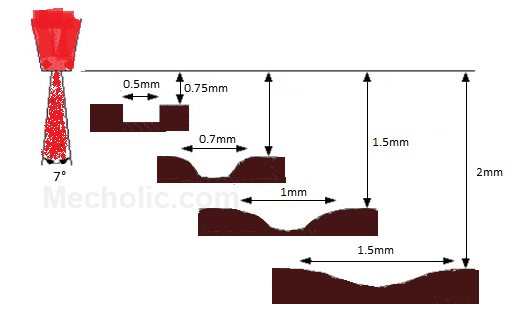Abrasive Jet Machine Setup and Construction Details
Carrier gas and Gas propulsion system
Carrier gas
The carrier gas used in AJM should be Non toxic, cheap and easily available. The carrier gas should not spread extensively when it discharged from the nozzle. The gas must be free from moister and oil. So it is better to choose the gas that can dry and cleaned with minimum effort. Common gases used AJM are air, nitrogen and carbon dioxide. The gas may be supplied by a cylinder or by using a compressor.Most widely used carrier gas is air. Almost all abrasive material powder can be run with clean shop air. In that case, preheater/dryer and filter are used along with compressor to avoid oil and moister contamination.
Types of abrasive material and Abrasive feeder
Read: Types of AJM abrasive material and its specific application- Applications, advantages, and disadvantages of AJM
Abrasive feeder includes the mixing chamber, vibrator, and nozzles. Abrasive feeder supplies the required amount of abrasive jet at optimum pressure and velocity. The amount of abrasive is controlled by the amplitude inducing vibration (at 50Hz). The carrier gas then propels the abrasive material to the mixing chamber, where the abrasive is get suspended in the carrier gas. The gas- abrasive mixture then move to the nozzle, where it gain high velocity (Read: How stream get high velocity when passed through the convergent nozzle). Finally, the nozzle directs abrasive jet to the workpiece. The material is removed from the workpiece due to erosion action of the abrasive jet.
Machining chamber
Machining chamber is a closed or semi-closed chamber where the workpiece is placed. It is provided to avoid spreading of abrasive material as well as workpiece grains. Machining chamber is equipped with a vacuum dust collector to prevent environmental pollution and health hazards.AJM Nozzle, Nozzle pressure, Jet velocity
Ajm nozzle must withstand erosive action of the abrasive jet. So it must be made of a material having high resistance to wear. Ajm nozzle is usually made of tungsten carbide or sapphire. Depending on requirement they are either circular or rectangular cross-sectioned. The life expectancy for Sapphire nozzle is 300hr, and that for WC nozzle is 30hr.The nozzle is designed such that the pressure loss due to curve and friction should be minimum. Normal nozzle diameter is 0.2 – 0.8mm and nozzle pressure is maintained between 2 - 10 bar. The abrasive jet velocity is a function of nozzle design, nozzle pressure, and size of the abrasive particle. The normal velocity of the abrasive jet is 150-300 m/s.
🔗Ultrasonic machining USM construction and working
🔗Electron beam machining EBM construction, operating principle and working
Standoff distance SOD / Nozzle tip distance NTD and stray cutting
How SOD effects Material removal rate?
 |
| Effect of standoff distance on material removal rate |
Standoff distance (SOD) is defined as the distance between the workpiece surface and the face of the nozzle. SOD have a considerable effect on the accuracy of work. The decrease in SOD increase accuracy and reduce the tapering of drilling hole. The penetration and material removal rate are increased with increasing SOD up to the certain distance, and then it decreases. Higher SOD causes stray cutting.
What is stray cutting?
Stray cutting is an over cutting of material during machining process. It results in a non-uniform cutting surface. Stray cutting is unavoidable if cutting operation not properly controlled.



